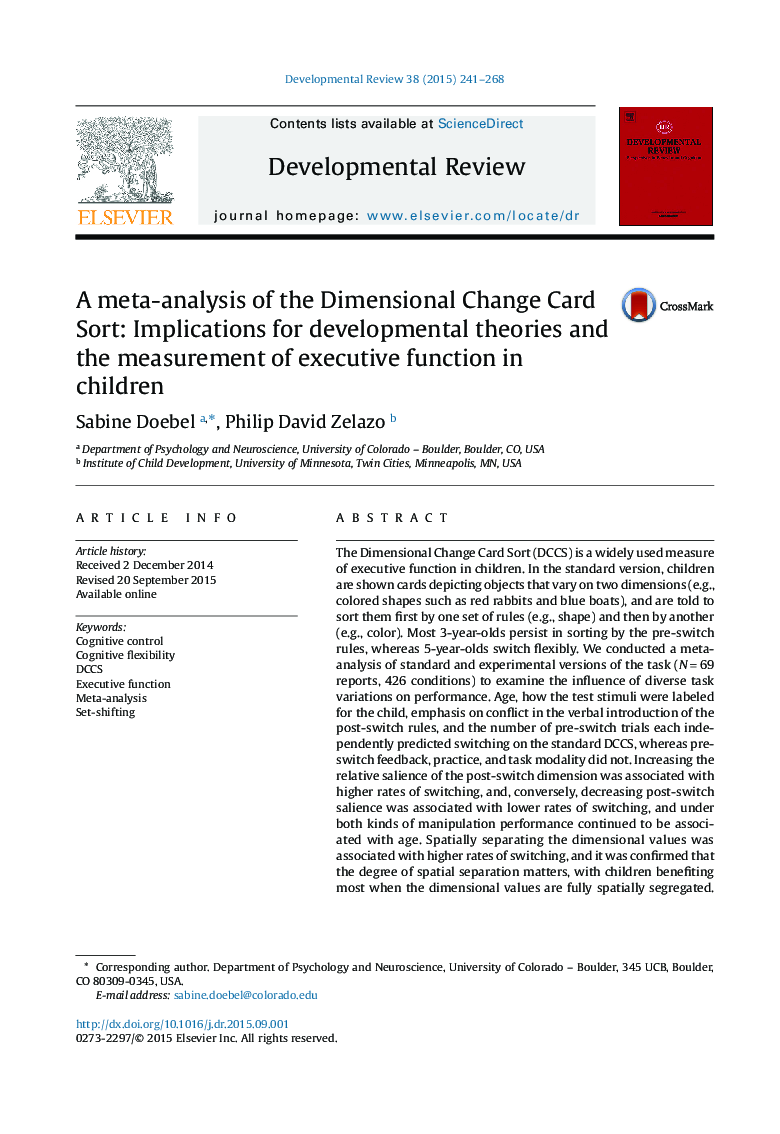| کد مقاله | کد نشریه | سال انتشار | مقاله انگلیسی | نسخه تمام متن |
|---|---|---|---|---|
| 353451 | 618798 | 2015 | 28 صفحه PDF | دانلود رایگان |
• Results of a meta-analysis of the Dimensional Change Card Sort are reported.
• Age and several procedural variations predicted performance on the standard task.
• Dimensional separation and salience predicted switching on experimental versions.
• Children tended to switch more when prompted to label the test card themselves and to switch less when reversal instructions were used.
• Implications for theories and the measurement of EF in childhood are discussed.
The Dimensional Change Card Sort (DCCS) is a widely used measure of executive function in children. In the standard version, children are shown cards depicting objects that vary on two dimensions (e.g., colored shapes such as red rabbits and blue boats), and are told to sort them first by one set of rules (e.g., shape) and then by another (e.g., color). Most 3-year-olds persist in sorting by the pre-switch rules, whereas 5-year-olds switch flexibly. We conducted a meta-analysis of standard and experimental versions of the task (N = 69 reports, 426 conditions) to examine the influence of diverse task variations on performance. Age, how the test stimuli were labeled for the child, emphasis on conflict in the verbal introduction of the post-switch rules, and the number of pre-switch trials each independently predicted switching on the standard DCCS, whereas pre-switch feedback, practice, and task modality did not. Increasing the relative salience of the post-switch dimension was associated with higher rates of switching, and, conversely, decreasing post-switch salience was associated with lower rates of switching, and under both kinds of manipulation performance continued to be associated with age. Spatially separating the dimensional values was associated with higher rates of switching, and it was confirmed that the degree of spatial separation matters, with children benefiting most when the dimensional values are fully spatially segregated.Switch rates tended to be higher in versions on which children were prompted to label the stimuli compared to when the experimenter provided labels, and lower when reversal instructions were used in conjunction with the standard task stimuli. Theoretical and practical implications for the study and measurement of executive function in early childhood are discussed.
Journal: Developmental Review - Volume 38, December 2015, Pages 241–268
